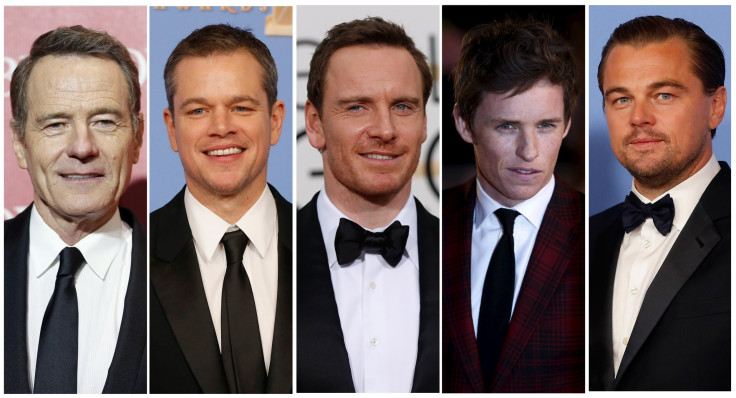Hollywood Diversity Study Says The Industry Ignores Women Not Playing ‘Sexy’ Roles

LOS ANGELES — Hollywood's white-dominated power structure has resulted in the disproportionate exclusion of racial minorities, says a study released Monday by the University of Southern California’s Annenberg School for Communication and Journalism. In other words, the #OscarsSoWhite controversy was virtually inevitable.
“This is no mere diversity problem,” professor Stacy L. Smith, who directed the study, said in a Monday news release. “This is an inclusion crisis.”
But a deeper look into the study shows another missing group as well: women playing roles that don’t require them to wear a bikini — or less. And the advent of relatively uncensored cable channels such as HBO — whose parent, Time Warner, is one of the worst offenders as far as lack of diversity, according to the study — may have actually made things worse.
The school’s Media, Diversity & Social Change Initiative directed the study, which looked at 109 movies released in 2014, as well as 305 TV and digital video series — broadcast by 31 networks and streaming services — that aired between Sept. 1, 2014, and Aug. 31, 2015. The study’s researchers also analyzed the demographics of more than 11,000 speaking characters and looked at the gender distribution among a group of more than 10,000 writers, directors and creators, and 1,500 executives.
“This is a landmark study,” Smith said in a release accompanying the study. “No one has looked from CEO to every speaking character across film, television, and digital content. The results speak to the landscape of media and the erasure of different groups on screen and behind the camera.”
The two groups most prominently erased: racial minorities and older women. “The hashtag #OscarsSoWhite should be changed to #HollywoodSoWhite,” the study reported, “as our findings show that an epidemic of invisibility runs throughout popular storytelling.”
Nearly 39 percent of the U.S. population is made up of people from what study termed “underrepresented racial/ethnic groups,” but only 28 percent of speaking characters in the films and shows they reviewed were. About 35 percent of all TV and film characters portray people over 40 years of age. Men make up about three-fourths of those, and in films alone, 79 percent. That's not a shocker, given that nearly 97 percent of movie directors are male. (Broadcast television had 17 percent female directors.)
The study demonstrates that when there's a woman behind the camera, there is a little more balance. Female directors correlate with a 5 percent jump in the number of female characters that appear on screen, and when there’s a woman writer or creator, there’s a double-digit percentage impact. But there's a catch, the study’s authors wrote.
“It may also be the case, however, that executives feel more comfortable hiring women directors and screenwriters when the story pulls female,” they wrote. “[This] limits the frequency and types of open directing/writing jobs available to women.”
In any case, having more women on screen brings its own issues. Female characters are more likely to have roles that require full or partial nudity than males — 33 percent compared with 11 percent — and that’s even more pronounced on cable, where shows such as “Game of Thrones” contribute to the nearly 40 percent of female characters that appear fully or partially nude. The more women on screen, the more likely there will be nudity and sexual content, the study’s authors found.
“The results … suggest that with a higher prevalence of females on screen a higher incidence of sexualization follows,” they wrote.
The percentage of female characters expected to disrobe or be “sexy” is troubling because it could promote “self objectification, body shame and/or appearance anxiety among some female viewers” — not to mention the effect it must have on aspiring actresses.
But Hollywood’s diversity issues — in this case, the apparent aesthetic preferences of its decision makers, which is a whole different discussion — also mean that African-American and Asian actresses play fewer sexualized roles and take off their clothes less frequently than their Caucasian counterparts. More than 34 percent of white female characters called for full or partial nudity, compared with 29 percent of African-American characters and 28 percent of Asian characters. Latina characters appear sexualized and naked at the highest rate of any demographic group, the study found.
Monday night, the school will continue the conversation with an event featuring Pete Nowalk, the creator of ABC’s “How to Get Away with Murder,” which features an African-American producer and main character, and Cathy Schulman, head of production in the motion pictures group at STX Entertainment.
© Copyright IBTimes 2025. All rights reserved.





















